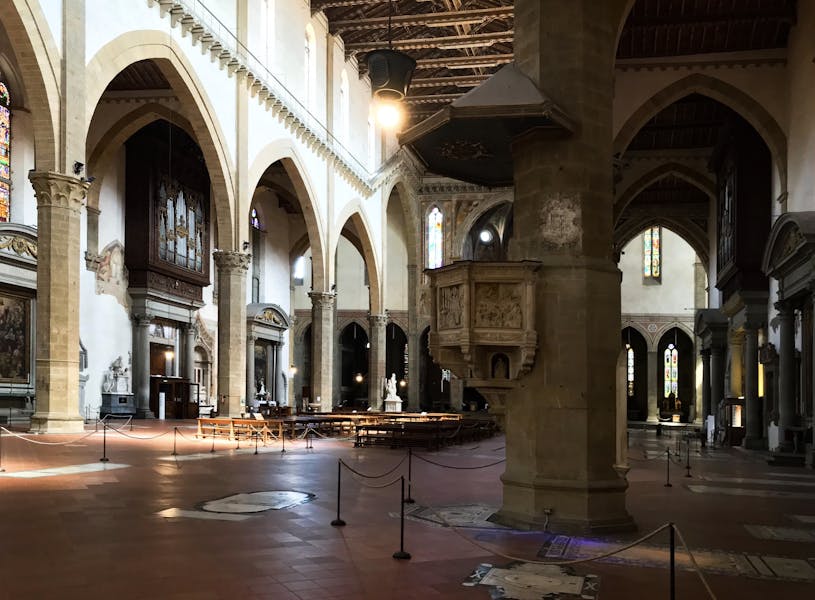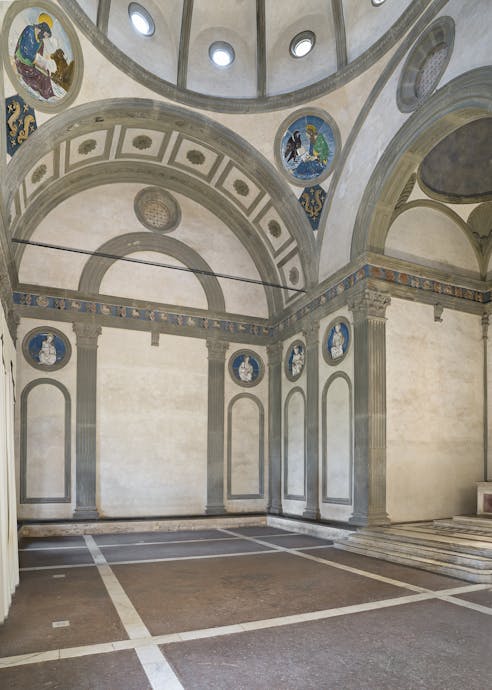
The artistic heritage of Santa Croce
“I had reached that point of emotion where the heavenly sensations of the fine arts meet passionate feeling. As I emerged from Santa Croce, I had palpitations of the heart, the life went out of me and I walked in fear of falling”. Stendhal describes better than anyone else the sense of bewildered confusion experienced after visiting Santa Croce with its astonishing wealth of artworks and the unique nature of the heritage it houses, an experience that has been known as "the Stendhal syndrome" ever since.
The monumental complex of Santa Croce houses an incomparable legacy of spirituality, art, history and culture which has been enriched over the centuries thanks to the patronage of men of the church, members of illustrious families, confraternities, enlightened patrons and politicians, and which boasts unique masterpieces of architecture, painting and sculpture in an unbroken sequence stretching from the Middle Ages to our own era.

Interior of the Basilica of Santa Croce
Santa Croce is at once the grand Gothic architecture of the basilica built to a design by Arnolfo di Cambio after 1294–5 and the Renaissance perfection of Brunelleschi's Pazzi Chapel; it is both the loftiest Florentine painting of the 14th century – the great religious fresco cycles painted by Giotto and his pupils – and the altarpieces of the Renaissance and the Counter-Reformation; it is at once the sculpture of Donatello and the monumental tombs of such great Italian figures as Michelangelo, Galileo, Machiavelli and Alfieri in whose virtues modern man must seek his inspiration.

Interior of Pazzi Chapel, First cloister
Thus this Franciscan basilica contains within it the entire history of Western art, faith and culture, and a great deal more.

